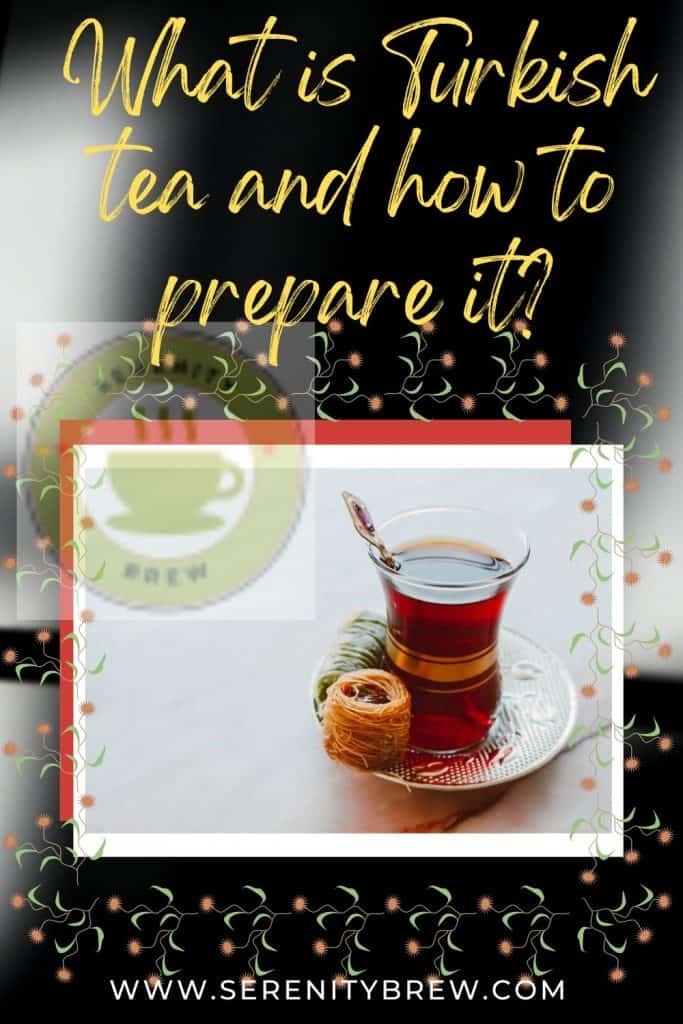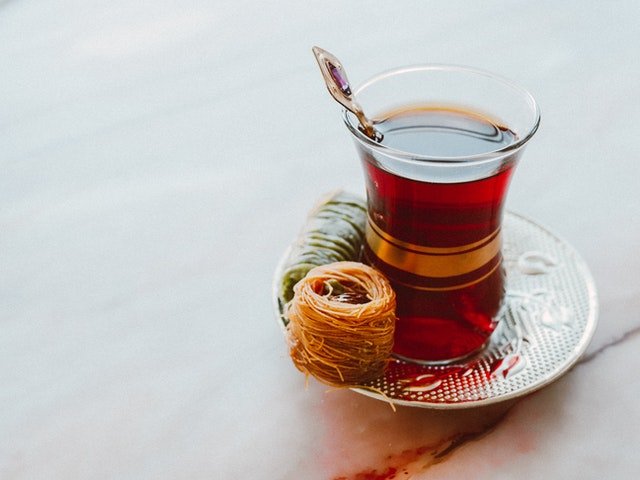
Did you know that Turkey is one of the main consumers of tea in the world? FAO data place consumption in at around 228,000 tons per year. Impressive, right?
Beyond this striking fact, Turkey is also a tea-producing country; in fact, it is the largest in the Middle East, although to a lesser extent than the large producers such as China, India, Kenya, Japan or Sri Lanka. From this information it is easy to deduce that this country has a teapot tradition. Now, have you ever tried Turkish black tea? Do you know its differences with the tea we usually drink in the West? Read on and find out all about it.
What is Turkish tea?
Turkish tea, or çay, is a ritual and a way to show hospitality and friendship. If you ever travel to Istanbul or any other Turkish city, you will discover that it is very common to be offered tea after meals.
At first glance, Turkish tea looks like the ones we drink every day at home, however, it is different in terms of its preparation and way of serving it. In fact, you won’t get it in bags.
As for the flavor and aroma of this specific variety of tea, you will notice it more intense and strong and even, in some cases, sweeter since a lot of sugar is usually added.
Of course, black tea is not the only infusion that is drunk in the country. Fruit infusions whose brightly colored powders can be bought in large bazaars are also very famous. It is worth noting here that these infusions are more popular with tourists than with locals, who prefer the taste of çay.
Turkish tea preparation
The most curious thing about Turkish tea lies in its preparation, which uses a double-tiered feature called çaydanlık. We will first explain the original method and an alternative method in case you do not have it.
Making Turkish tea with çaydanlık
The general idea is that two kettles are used: one to prepare a strong infusion and the other to dilute it to taste when serving it.
1. Charge the kettles
Fill the bottom kettle with water. On the top, put the tea. Turkish tea is generally brewed strong, so you can put at least a couple of tablespoons of tea per cup of water. Fear not, the tea in the top pot won’t burn, as the bottom one acts as an insulator.
two . when the water boils
When the lower pot is boiling, remove the çaydanlık from the heat. Pour the water from the bottom kettle into the top one.
3. Recharge the water
Then refill the lower kettle with water. He mounts the çaydanlık again and puts it back on the fire.
4. Second boil and rest
The tea from the upper pot must be infused for a more or less long period of time, between 10 and 15 minutes. In the meantime, the water in the lower kettle will return to a boil. Once this happens, the tea is ready to drink.
5. Serve and drink
Turkish tea is usually drunk in small crystal glasses. Each person mixes the tea from the top pot and the hot water from the bottom one to their liking. Strong, slightly diluted tea is called koyu in Turkish, while light tea is called açik. In both cases, the final touch is given with plenty of sugar.
Making Turkish tea without çaydanlık
If you don’t have the typical Turkish double-tiered kettle, you can emulate its operation by using two normal kettles or even a kettle and a saucepan. A colander will also do you good.
A kettle without a filter
Remove the filter from the kettle and put enough tea directly into the kettle to make strong tea. Pour boiling water into it and let stand for at least 10 minutes.
Another container to heat more water
While the tea is steeping, bring the water to a boil. When it does, it’s a good idea to put it in an empty teapot or some other heat-retaining container.
serve and drink
Use again the typical crystal glasses to drink tea in Turkey. Pour tea from the first pot. The çaydanlık have a built-in filter but you can filter the tea with the simple maneuver of putting a strainer between the glass and the teapot. Next, lower the tea with the hot water to leave it to your liking Sweeten and drink.
Curiosities about Turkish tea
We have been mentioning several curiosities throughout the article, however, it is worth adding some and reviewing the ones we already told you about:
- A special double teapot is used, which allows to keep the tea production always hot and ready to serve, without it becoming bitter.
- Turkish tea is served in small crystal glasses, not cups.
- Being an intense tea, it is lowered with water to suit the consumer.
- The size of the glass in which it is served means that the tea never gets cold. Firstly because its format keeps the heat and secondly, because it is so rich that this small portion will not last you too long.
- The choice of glass for the glasses is not random: its transparency allows you to appreciate the intensity of the tea.
- Turkish tea is traditionally drunk very sweet. It is normal that in a restaurant they serve it to you with two or three sugar cubes next to it.
- The çay is much more than a simple drink. Like mate in Argentina, Turkish tea is a way to welcome a person, a way to strike up a conversation, and a traditional part of the culture.
You should never refuse a tea in Turkey as it is considered rude. It is simply like refusing the hospitality received.
Tea cultivation in Turkey

Tea cultivation in Turkey takes place along the Black Sea coast, from the border with Georgia to the Turkish city of Rize. A curiosity? Many people grow tea in their home gardens for personal consumption.
This region has a humid climate throughout the year, in addition to being characterized by high temperatures during spring-summer, variables associated with the subtropical climate that are ideal for growing tea. However, during the winter, temperatures are low, causing frost that can damage the tea plant. For this reason, the harvest is carried out for 6 months, generally in three batches.
Now, unlike the cultivation of tea in other countries, here the harvest is carried out with manual scissors instead of by hand. The workers arrive at the tea fields very early in the morning and continue their work until the early afternoon. Each of them cuts Camellia sinensis leaves using their scissors and keeps them in a special cloth bag for that purpose.
Then, the leaves are spread out in special places for this purpose, where the drying process begins. Once air-drying has occurred, that is, the water content of the leaves has been reduced by 70 to 80%, they are cut and rolled.
After this process, the rolled tea leaves begin a fermentation process that will give them the typical aroma, color and flavor of black tea. Subsequently, they are dried in special ovens to stop oxidation and allow the tea to retain its flavor and aroma for longer.
Now that you know Turkish tea, be sure to try it on your future trip to Turkey or by preparing it at home according to its custom. Let yourself be overwhelmed by its intense flavor and aroma, and remember that you can adapt its intensity to your tastes by lowering it with water and adding sugar. Of course, do not add milk!
